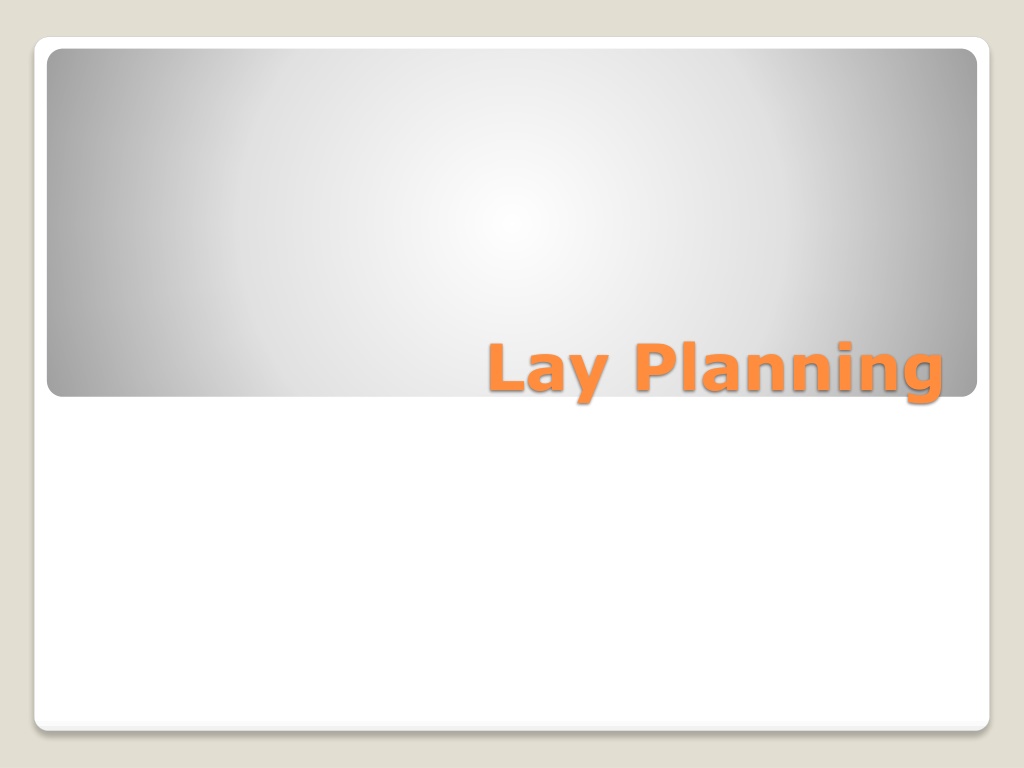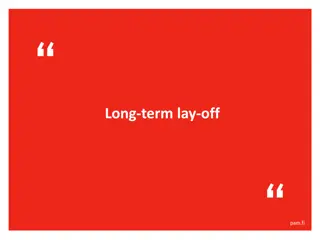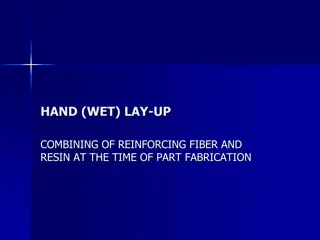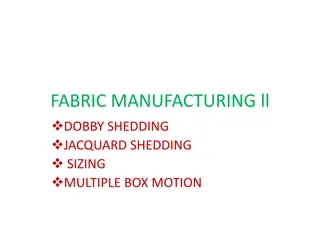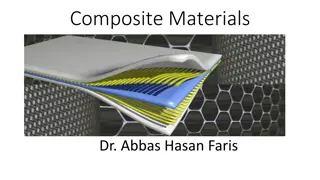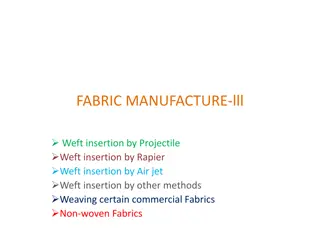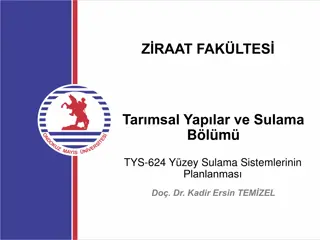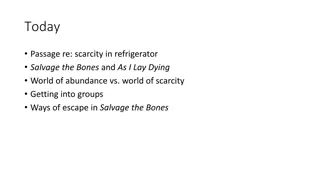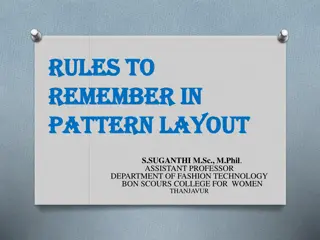Optimizing Fabric Cutting Efficiency: Lay Planning Methods and Strategies
Lay planning is crucial for managing material, labor, and space in the cutting room. Different methods such as manual lay planning, pantograph scaling, and computerized systems are used to optimize fabric usage. This process involves arranging pattern pieces efficiently on the fabric to minimize waste and improve material utilization. Various types of lay plans, including half garment lay and full garment lay, cater to different fabric types and production needs.
Download Presentation

Please find below an Image/Link to download the presentation.
The content on the website is provided AS IS for your information and personal use only. It may not be sold, licensed, or shared on other websites without obtaining consent from the author. Download presentation by click this link. If you encounter any issues during the download, it is possible that the publisher has removed the file from their server.
E N D
Presentation Transcript
Lay: A lay is a stack of fabric plies that have been prepared for cutting. Lay Planning: is the basis of managing cutting room, labor and table space. Spreading and cutting schedules are affected by table length, type of equipment, spread length, spreading time, and cutting time.
Methods For Lay Planning: Manual Lay Planning: It is easy to estimate the amount of fabric required by laying out the pattern pieces on the table.
Procedure for manual lay plan: Place the pattern pieces as close together as possible. The outline of pattern are traced on the fabric or on marker paper. Measure the amount of fabric required.
Miniaturization or pantograph lay planning: Pantograph is an instrument which is used for lay planning. By using a pantograph full size pattern can be reduced in a scale of 1:5. This simplifies the manual arrangement of pattern pieces and makes it easier to arrive at a lay which optimize material use and minimize cutting waste. The miniature lay plan will be photographed or photocopied for achieving, and the enlarge to full scale to provide actual cutting marker.
Computerized lay planning: After grading computer can be used for lay planning and marker making. Individual pieces can be moved on the screen to produce optimize layout. Some systems also have the ability to make lay automatically according to predetermined criteria. System can directly calculate the material utilization and make the lay accordingly. Lay plan is stored in the system and can be used at the time of need.
Types of Lay Plan: Half Garment Lay: This include only half of garment piece e.g. for folded or tubular fabrics.
Full Garment lay: All of garment pieces left and right sides are included in the lay. Used for open width fabrics.
Single Size Lay: The lay includes all of the pieces for a single size. Restricting the lay to a single size makes order planning and laying up the fabric easier, but the disadvantage is a somewhat higher material consumption, compared to multi- size lay.
Multi-size Lays: Sectional lay: The lay is made in at least two distinct rectangular sections. Each section contains all of the parts for a single size. Adjacent sections may be the same or a different size.
Interlocking lay: Two or more sections, one after the other, usually different sizes, but the sections are not confined to strict rectangular areas; the pieces for the different sections may merge at the borders
Mixed multi-size lay: In this case there are no distinct sections: the pieces for the two or more different garment sizes are intermingled. This is the arrangement, which normally gives the best material utilization.
